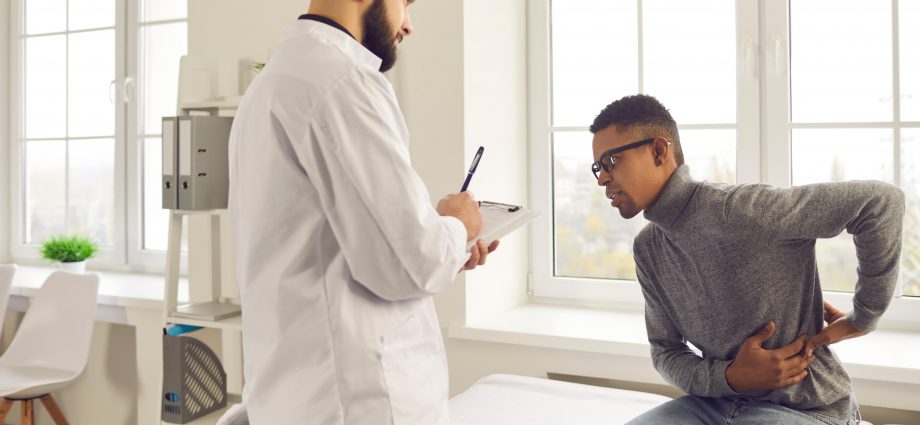FRIDAY, June 23, 2023 (HealthDay News) — If you suffer from upper back pain, it’s time to reclaim your comfort and regain control of your daily life. Relief from this debilitating condition is within reach.
Here, you will learn about the causes of upper back pain and strategies to alleviate your discomfort.
What is upper back pain?
Imagine discomfort that takes residence between your shoulder blades, affecting your daily life, and keeping you from doing many of the things you love. That’s just what upper back pain entails — a sensation of pain or discomfort from the base of your neck to the bottom of your ribcage. According to Dignity Health, this form of back pain can vary in intensity, ranging from a mild annoyance to a debilitating ache, and it can either be persistent or surface only during certain activities.
While back pain is widespread, upper left back pain and upper right back pain are less common than their counterparts in the lower back. The bones in your upper and middle back form a sturdy connection with your ribcage, limiting their mobility compared to the more flexible bones in your neck and lower back. This unique skeletal structure contributes to the distinctive nature of upper back pain, requiring specific attention and care.
What is causing my upper back pain?
If you are experiencing upper back pain, you want to understand what is causing it. The Cleveland Clinic suggests that upper back pain emerges from diverse medical conditions and injuries, each with its unique set of triggers. Here are the most common causes:
- Strains and sprains — Among the leading causes of upper back pain, strains occur when muscles, tendons or ligaments are subjected to excessive stress. Poor lifting techniques or attempting to lift objects beyond your capacity can result in these injuries.
- Poor posture — Many individuals with upper back pain struggle to maintain an upright stance. Their posture may become compromised, causing them to stand askew or hunched, with their torso deviating from proper alignment with the spine.
- Disk problems — Disks in the spine tend to slip or “bulge,” exerting pressure on nearby nerves. They can also experience tears, commonly referred to as herniated disks, further contributing to upper back pain.
- Fractures — Accidents, such as car crashes or falls, can lead to fractures in the bones of the spine, which invariably generate intense upper back pain.
- Arthritis — Osteoarthritis, a widespread form of arthritis, can instigate upper back pain as it affects the joints and cartilage, causing inflammation and discomfort.
What are the symptoms of upper back pain?
Back pain is one of those things that can creep up on folks, catching people off guard. NewYork-Presbyterian says you may experience these upper back pain symptoms:
- Sharp pain — Often described as a burning sensation or akin to the piercing thrust of a knife, this sharp pain can be localized to a specific spot or radiate, traveling along a nerve pathway to affect other areas.
- General achiness — Starting in one particular region, a sense of overall achiness may gradually extend to neighboring areas, contributing to a pervasive discomfort.
- Stiffness — Reduced mobility in your back, brought on by pain or achiness, can lead to stiffness, limiting your range of motion and making it harder to move.
- Tingling, numbness or weakness — These sensations, reminiscent of pins and needles, numbness or weakness, can be a sign of the compression or impingement of nerves in the affected area.
How to relieve upper back pain
“There are so many variables when it comes to back pain,” said Dr. James Dowdell, a spine surgeon at the Hospital for Special Surgery (HSS) in New York City. “How it can be treated depends on what’s causing it. Ultimately, some types of back pain can be helped with surgery, and some can’t.”
That said, tailoring your treatment approach to your upper back pain’s specific causes and symptoms is critical. For individuals experiencing mild to moderate discomfort, home management strategies are worth considering. Here are some options for upper back pain relief from the Cleveland Clinic:
- Over-the-counter pain medications — Acetaminophen (Tylenol) and nonsteroidal anti-inflammatory drugs (NSAIDs) can relieve pain or inflammation.
- Heating pad — Applying a heating pad to the affected area can help ease pain and alleviate stiffness, promoting relaxation and improved mobility.
- Ice pack — To address pain and swelling, consider using an ice pack or a cold compress. This can help reduce inflammation and numb the area, providing temporary relief.
- Medical massage — A professional trained in medical massage can target specific muscles and promote relaxation, potentially reducing pain and tension.
- Adequate rest — Prioritize sufficient rest to allow your body time to heal and recover. Adequate sleep and moments of relaxation can help you manage your symptoms.
Consider stretches for upper back pain as well. HSS recommends stretches such as a trunk rotation, a slouch overcorrection stretch, and a standing lumbar extension. And never underestimate the power of self-care to help alleviate upper back pain. The Mayo Clinic reiterates the importance of being active in your daily routine and performing low-impact exercises like walking.
The path to recovery: Navigating the challenges of upper back pain
Upper back pain can take an immense toll on your everyday life. The throbbing discomfort, the limitations it imposes and the frustrations it breeds are all too familiar. But you are not alone in this journey toward relief and recovery. With proper understanding, tailored care and a compassionate support system, you can triumph over the silent suffering of upper back pain and embrace a life filled with all those activities and experiences you have been missing.
Copyright © 2024 HealthDay. All rights reserved.

